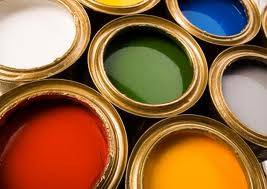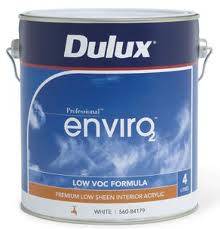Giving a room a fresh coat of paint is one of the easiest and most popular ways to update it. You’ll find hundreds of paint colors and dozens of paint types at any local hardware store, so how do you pick one? Other than the color, aren’t they all the same?
The ingredients that make up paint can differ between manufacturers, and now with dozens of types to choose from, you may want to do a little research before choosing a gallon of paint.
You’ve probably heard of volatile organic compounds (VOCs). They are emitted as gasses from certain solids and liquids, and can include a variety of chemicals. In painting, the greatest quantity of VOCs are released during painting; however, even after the paint is dry, VOCs are still emitted into your air. These chemicals have been shown to have both short- and long-term health effects, and are a big contributor to poor indoor air quality.
When home envelopes weren’t as “tight,” this was less of an issue, because air regularly moved from the outside in. However, houses today are built and remodeled to be extremely energy efficient, and as a result, we are seeing poorer indoor air quality. Dust and VOCs get trapped inside the home, and for this reason we are seeing more building materials being manufactured with low or no VOCs.
Types of Eco-Friendly Paint
Natural Paint. Natural paints will not contain heavy metals or VOCs. They are made from natural materials – waxes, oils and dyes derived from plants. These paint products can be found as stains, sealers, waxes, finishes, paints and primers. Options include clay paints, lime washes and milk or casein paint. All of these products work best indoors.
Earlier versions of natural paints got a bad reputation because of their lack of durability and tendency to fade. However, newer natural paint products no longer have this problem. These paints emit few to no VOCs and use water as a base. To be categorized as “natural,” these paints must have 200 or fewer grams of VOCs per liter of paint. This equates to less than half that contained in ordinary paint.
Paints that bear the Green Seal have 50 grams or less of VOC per liter. Zero VOC paint is a bit more expensive, but contains a mere 5 grams or less.

Clay paints are derived from minerals and offer an earthy, adobe look. Lime washes are made in the same fashion
 as traditional whitewash; they can be used on the exterior of a home, but will need to be reapplied regularly. Lime is also corrosive, so gloves and goggles should be used when applying, but once dry, it is safe to touch. Milk or casein paint is made from a natural protein found in cow’s milk and comes in powder form.
as traditional whitewash; they can be used on the exterior of a home, but will need to be reapplied regularly. Lime is also corrosive, so gloves and goggles should be used when applying, but once dry, it is safe to touch. Milk or casein paint is made from a natural protein found in cow’s milk and comes in powder form.
The downside is that it must be used quickly after mixing, but once set, it forms a tough, durable finish.
Other considerations
When reviewing the ingredients in paint, make sure to also look for acetone, ammonia or formaldehyde. Even though these aren’t petroleum based, they can still be a problem to indoor air quality. If you want to decrease VOCs, avoid anti-mildew and anti-fungal paints. They are toxic and tend to emit gas for years.
Store low-VOC paints in a stable environment, since they can go bad if they are exposed to extreme cold and heat. Make sure the lids are secure and keep the paint cans upside down. Finally, do your research and shop carefully to find the best non-toxic paint for the job you have in mind.


